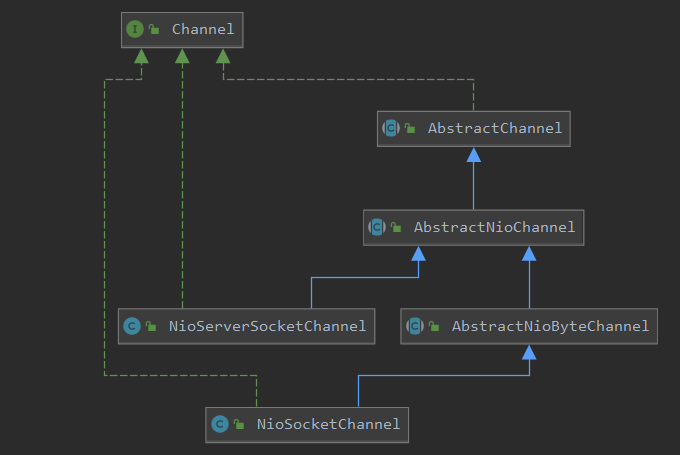1
2
3
4
5
6
7
8
9
10
11
12
13
14
15
16
17
18
19
20
21
22
23
24
25
26
27
28
29
30
31
32
33
34
35
36
37
38
39
40
41
42
43
44
45
46
47
48
49
50
51
52
53
54
55
56
57
58
59
60
61
62
63
64
65
66
67
68
69
70
71
72
73
74
75
76
77
78
79
80
81
82
83
84
85
86
87
88
89
90
91
92
93
94
95
96
97
98
99
100
101
102
103
104
105
106
107
108
109
110
111
112
113
114
115
116
117
118
119
120
121
122
123
124
125
126
127
128
129
130
131
132
133
134
135
136
137
138
139
140
141
142
143
144
145
146
147
148
149
150
151
152
153
154
155
156
157
158
159
160
161
162
163
164
165
166
167
168
169
170
171
172
173
174
175
176
177
178
179
180
181
182
183
184
185
186
187
188
189
190
191
192
193
194
195
196
197
198
199
200
201
202
203
204
205
206
207
208
209
210
211
212
213
214
215
216
217
218
219
220
221
222
223
224
225
226
227
228
229
230
231
232
233
234
235
236
237
238
239
240
241
242
243
244
245
246
247
248
249
250
251
252
253
254
255
256
257
258
259
260
261
262
263
264
265
266
267
268
269
270
271
272
273
274
275
276
277
278
279
280
281
282
283
|
public abstract class AbstractChannel extends DefaultAttributeMap implements Channel {
protected abstract class AbstractUnsafe implements Unsafe {
/**
* 将当前 Unsafe 对应的 Channel 注册到 EventLoop 的多路复用器上,
* 然后调用 DefaultChannelPipeline 的 fireChannelRegistered()方法,
* 如果 Channel 被激活 则调用 DefaultChannelPipeline 的 fireChannelActive()方法
*/
@Override
public final void register(EventLoop eventLoop, final ChannelPromise promise) {
if (eventLoop == null) {
throw new NullPointerException("eventLoop");
}
if (isRegistered()) {
promise.setFailure(new IllegalStateException("registered to an event loop already"));
return;
}
if (!isCompatible(eventLoop)) {
promise.setFailure(
new IllegalStateException("incompatible event loop type: " + eventLoop.getClass().getName()));
return;
}
AbstractChannel.this.eventLoop = eventLoop;
if (eventLoop.inEventLoop()) {
register0(promise);
} else {
try {
eventLoop.execute(new Runnable() {
@Override
public void run() {
register0(promise);
}
});
} catch (Throwable t) {
logger.warn(
"Force-closing a channel whose registration task was not accepted by an event loop: {}",
AbstractChannel.this, t);
closeForcibly();
closeFuture.setClosed();
safeSetFailure(promise, t);
}
}
}
private void register0(ChannelPromise promise) {
try {
// check if the channel is still open as it could be closed in the mean time when the register
// call was outside of the eventLoop
if (!promise.setUncancellable() || !ensureOpen(promise)) {
return;
}
boolean firstRegistration = neverRegistered;
doRegister();
neverRegistered = false;
registered = true;
// Ensure we call handlerAdded(...) before we actually notify the promise. This is needed as the
// user may already fire events through the pipeline in the ChannelFutureListener.
pipeline.invokeHandlerAddedIfNeeded();
safeSetSuccess(promise);
pipeline.fireChannelRegistered();
// Only fire a channelActive if the channel has never been registered. This prevents firing
// multiple channel actives if the channel is deregistered and re-registered.
if (isActive()) {
if (firstRegistration) {
pipeline.fireChannelActive();
} else if (config().isAutoRead()) {
// This channel was registered before and autoRead() is set. This means we need to begin read
// again so that we process inbound data.
//
// See https://github.com/netty/netty/issues/4805
beginRead();
}
}
} catch (Throwable t) {
// Close the channel directly to avoid FD leak.
closeForcibly();
closeFuture.setClosed();
safeSetFailure(promise, t);
}
}
/**
* 绑定指定的端口,对于服务端 用于绑定监听端口,
* 对于客户端,主要用于指定 客户端Channel 的本地绑定Socket地址。
*/
@Override
public final void bind(final SocketAddress localAddress, final ChannelPromise promise) {
assertEventLoop();
if (!promise.setUncancellable() || !ensureOpen(promise)) {
return;
}
// See: https://github.com/netty/netty/issues/576
if (Boolean.TRUE.equals(config().getOption(ChannelOption.SO_BROADCAST)) &&
localAddress instanceof InetSocketAddress &&
!((InetSocketAddress) localAddress).getAddress().isAnyLocalAddress() &&
!PlatformDependent.isWindows() && !PlatformDependent.maybeSuperUser()) {
// Warn a user about the fact that a non-root user can't receive a
// broadcast packet on *nix if the socket is bound on non-wildcard address.
logger.warn(
"A non-root user can't receive a broadcast packet if the socket " +
"is not bound to a wildcard address; binding to a non-wildcard " +
"address (" + localAddress + ") anyway as requested.");
}
boolean wasActive = isActive();
try {
doBind(localAddress);
} catch (Throwable t) {
safeSetFailure(promise, t);
closeIfClosed();
return;
}
if (!wasActive && isActive()) {
invokeLater(new Runnable() {
@Override
public void run() {
pipeline.fireChannelActive();
}
});
}
safeSetSuccess(promise);
}
/**
* 客户端 或 服务端,主动关闭连接
*/
@Override
public final void disconnect(final ChannelPromise promise) {
assertEventLoop();
if (!promise.setUncancellable()) {
return;
}
boolean wasActive = isActive();
try {
doDisconnect();
} catch (Throwable t) {
safeSetFailure(promise, t);
closeIfClosed();
return;
}
if (wasActive && !isActive()) {
invokeLater(new Runnable() {
@Override
public void run() {
pipeline.fireChannelInactive();
}
});
}
safeSetSuccess(promise);
closeIfClosed(); // doDisconnect() might have closed the channel
}
/**
* 在链路关闭之前需要首先判断是否处于刷新状态,如果处于刷新状态说明还有消息尚
* 未发送出去,需要等到所有消息发送完成再关闭链路,因此,将关闭操作封装成Runnable稍后再执行
*/
@Override
public final void close(final ChannelPromise promise) {
assertEventLoop();
close(promise, CLOSE_CLOSED_CHANNEL_EXCEPTION, CLOSE_CLOSED_CHANNEL_EXCEPTION, false);
}
/**
* 本方法实际上将消息添加到环形发送数组中,并不是真正的写Channel
*/
@Override
public final void write(Object msg, ChannelPromise promise) {
assertEventLoop();
ChannelOutboundBuffer outboundBuffer = this.outboundBuffer;
if (outboundBuffer == null) {
// If the outboundBuffer is null we know the channel was closed and so
// need to fail the future right away. If it is not null the handling of the rest
// will be done in flush0()
// See https://github.com/netty/netty/issues/2362
safeSetFailure(promise, newWriteException(initialCloseCause));
// release message now to prevent resource-leak
ReferenceCountUtil.release(msg);
return;
}
int size;
try {
msg = filterOutboundMessage(msg);
size = pipeline.estimatorHandle().size(msg);
if (size < 0) {
size = 0;
}
} catch (Throwable t) {
safeSetFailure(promise, t);
ReferenceCountUtil.release(msg);
return;
}
outboundBuffer.addMessage(msg, size, promise);
}
/**
* 将缓冲区中待发送的消息全部写入 Channel,并发送给通信对方
*/
@Override
public final void flush() {
assertEventLoop();
ChannelOutboundBuffer outboundBuffer = this.outboundBuffer;
if (outboundBuffer == null) {
return;
}
outboundBuffer.addFlush();
flush0();
}
@SuppressWarnings("deprecation")
protected void flush0() {
if (inFlush0) {
// Avoid re-entrance
return;
}
final ChannelOutboundBuffer outboundBuffer = this.outboundBuffer;
if (outboundBuffer == null || outboundBuffer.isEmpty()) {
return;
}
inFlush0 = true;
// Mark all pending write requests as failure if the channel is inactive.
if (!isActive()) {
try {
if (isOpen()) {
outboundBuffer.failFlushed(FLUSH0_NOT_YET_CONNECTED_EXCEPTION, true);
} else {
// Do not trigger channelWritabilityChanged because the channel is closed already.
outboundBuffer.failFlushed(newFlush0Exception(initialCloseCause), false);
}
} finally {
inFlush0 = false;
}
return;
}
try {
doWrite(outboundBuffer);
} catch (Throwable t) {
if (t instanceof IOException && config().isAutoClose()) {
/**
* Just call {@link #close(ChannelPromise, Throwable, boolean)} here which will take care of
* failing all flushed messages and also ensure the actual close of the underlying transport
* will happen before the promises are notified.
*
* This is needed as otherwise {@link #isActive()} , {@link #isOpen()} and {@link #isWritable()}
* may still return {@code true} even if the channel should be closed as result of the exception.
*/
initialCloseCause = t;
close(voidPromise(), t, newFlush0Exception(t), false);
} else {
try {
shutdownOutput(voidPromise(), t);
} catch (Throwable t2) {
initialCloseCause = t;
close(voidPromise(), t2, newFlush0Exception(t), false);
}
}
} finally {
inFlush0 = false;
}
}
}
}
|



